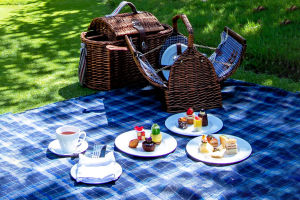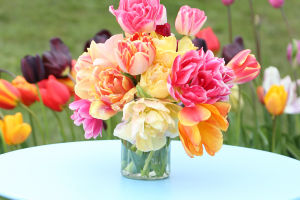
Blossom Brilliance

Vase flower arrangement, an uncomplicated and sophisticated method of floral design, not only embellishes living spaces but also captures the essence of nature's beauty.
Within the realm of maintaining vase flower arrangements, the roles of water selection and timely changes are pivotal.
Correct water quality and a judicious frequency of water changes guarantee the enduring vibrancy of vase flowers, bestowing a sense of tranquility and aesthetic beauty to one's surroundings. To nurture vase flowers effectively, meticulous attention is required in the following key areas.
Water Selection:
a. Cleanliness and Hygiene: Opt for clear and transparent tap water or mineral water to steer clear of heavily polluted water sources. This ensures a clean and hygienic growth environment for vase flowers.
Related
 A driver's guide to winter road.
A driver's guide to winter road.
 Winter health: Embrace warmth, exercise, and caution for well-being.
Winter health: Embrace warmth, exercise, and caution for well-being.
 Discover Singapore's enchanting parks—perfect for family picnics amidst nature, offering serene havens and fostering unity.
Discover Singapore's enchanting parks—perfect for family picnics amidst nature, offering serene havens and fostering unity.
 9 Little Ways to Incorporate Flowers into Your Life!
9 Little Ways to Incorporate Flowers into Your Life!
 Bringing lazy decoration style into your space.
Bringing lazy decoration style into your space.
 Living on your terms: 7 tips for personalized home design.
Living on your terms: 7 tips for personalized home design.
b. Optimal Temperature: Maintain water temperature close to room temperature, avoiding extremes. Excessive warmth can cause flowers to wither, while cold water may impede plant growth and metabolism.
c. Impurity Removal: When using tap water, employ filtration or sedimentation methods to eliminate impurities, safeguarding flowers from adverse effects.
d. Nutrient Addition: Enhance water quality by adding an appropriate amount of flower fertilizer or vitamins. This aids in nutrient absorption, ultimately prolonging the flowering period.
Water Level:
a. Appropriate Depth: Ideally, the water level should be maintained at one-third of the vase's capacity to prevent excessive humidity, branch rot, and bacterial growth.
b. Flower-Specific Requirements: Different flowers have varied water level preferences. Carnations, chrysanthemums, and certain grass flowers thrive in lower water levels, while lilies and water lilies require deeper water for cultivation.

Timely Water Changes:
a. Regularity: Change the water in the vase every 2-3 days to prevent water quality deterioration and promote healthy flower growth.
b. Visual Inspection: Check the water clarity regularly. If it appears turbid, immediate water replacement is necessary. In cases where the vase is not transparent, touch the flower stem to detect any sticky film, indicating the need for a water change.
c. Maintenance Considerations: Adjust the frequency of water changes based on seasonal variations and the use of flower preservatives.
Important Considerations:
a. Bacterial Prevention: During water changes, ensure thorough cleaning of the vase's inner walls to mitigate bacterial growth. Use a solution of light saltwater or bleach to wipe the vase, maintaining optimal cleanliness.
b. Sunlight Exposure: Position vase flower arrangements away from direct sunlight to prevent algae growth in the water, averting the water from turning green.
c. Avoid Mixed Cultivation: Refrain from combining different flower types in the same vase, as this minimizes nutrient competition and promotes optimal growth.
The allure of vase flower arrangements transcends beyond flower selection and arrangement techniques—it hinges on meticulous care. The nuances of water usage and changes play a pivotal role in sustaining the vitality of vase flowers and extending their blooming period.
Through dedicated care, each flower can unfold its unique brilliance, enriching life with an array of vibrant colors.
As we revel in the pleasure derived from vase flower arrangements, let us conscientiously attend to the intricacies of water management, ensuring that every blossom thrives in a fresh and nurturing environment.